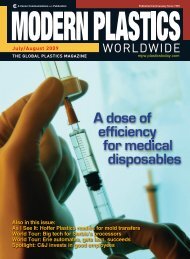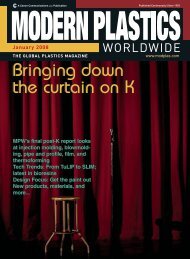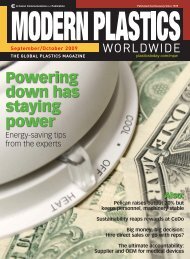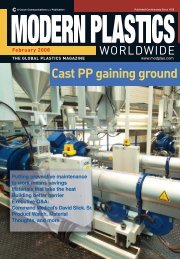amidiq - dae uptlax
amidiq - dae uptlax
amidiq - dae uptlax
You also want an ePaper? Increase the reach of your titles
YUMPU automatically turns print PDFs into web optimized ePapers that Google loves.
REVISTA MEXICANA DE INGENIERÍA QUÍMICA Vol. 6, No. 3 (2007) 237-242 AMIDIQ<br />
A PRELIMINARY STUDY ON MOLECULAR CHARACTERIZATION OF THE<br />
EUBACTERIA IN A THERMOPHILIC, POULTRY WASTE FED<br />
ANAEROBIC DIGESTER<br />
UN ESTUDIO PRELIMINAR DE LA CARACTERIZACIÓN MOLECULAR DE<br />
EUBACTERIAS EN UN DIGESTOR ANAEROBIO, TERMOFILICO ALIMENTADO<br />
CON DESECHOS DE UNA POLLERÍA<br />
Abstract<br />
* Corresponding author: E-mail: bnagamani@mail.uadec.mx<br />
Phone 871- 757 1795, fax: (+52) 871- 757 1785<br />
N. Balagurusamy *<br />
Escuela de Ciencias Biológicas, Carretera Torreon-Matamoros Km 7.5, Ciudad Universitaria,<br />
Universidad Autónoma de Coahuila, Torreón. CP 27000, México.<br />
Received 20 th February 2006; Accepted 6 th November 2007<br />
Biomethanation is a unique process which aids the recovery of carbon present in the wastes as methane, an energy<br />
rich product. The presence and activity of a variety of bacterial and archaeal microorganisms play a vital role in this<br />
process. An understanding of the microbial groups present in the anaerobic digester is important for augmenting the<br />
recovery of carbon and also will help in solving the digester related problems as the functioning of the digester<br />
depends on the microbial activity. Molecular characterization of the anaerobic bacteria present in a thermophilic<br />
(55ºC) anaerobic digester fed with poultry waste was analyzed by DNA extraction followed by PCR amplification,<br />
cloning and sequencing of the obtained clones. Results showed that more than 75 per cent of the clones represented<br />
uncultured bacteria and among the different genera recorded, Clostridium sp. was dominant. Results demonstrated<br />
the need for obtaining more number of clones and a combination of different methods for reliable molecular<br />
characterization of an anaerobic digester.<br />
Keywords: anaerobic digester, poultry waste, fermentative anaerobes, molecular analysis.<br />
Resumen<br />
La biometanación es un proceso único que ayuda la recuperación del carbono presente en la basura como el<br />
metano, un producto rico en energía. La presencia y actividad de una variedad bacteriana y los microorganismos<br />
del archaea juegan un papel vital en este proceso. Una comprensión de los grupos microbianos presentes en el<br />
digestor anaerobio es importante para aumentar la recuperación de carbono y también ayudará resolver los<br />
problemas relacionados con el digestor ya que depende de la actividad microbiana. La caracterización molecular de<br />
grupos de bacterias anaerobias presente en un digestor termofilico (55ºC), anaerobio alimentado con los desechos<br />
de la pollería se analizó por extracto de ADN seguido por la amplificación de PCR, clonando y secuenciado de los<br />
clones obtenidos. Los resultados mostraron que más del 75 por ciento de los clones representaron las bacterias no<br />
cultivadas y entre diferente genero registrado, Clostridium sp. era dominante. Los resultados demostraron<br />
claramente la necesidad de obtener más número de clones y la combinación de los métodos diferentes para una<br />
caracterización molecular confiable de un digestor anaerobio.<br />
Palabras clave: digestor anaerobio, desechos de pollería, anaerobias fermentativas, análisis molecular.<br />
1. Introduction<br />
Management of animal manures is of growing<br />
concern due to the environmental risk such as<br />
contamination of ground and surface water,<br />
pathogens and offensive odor. Approximately 1000<br />
birds produce 10-15 tons of litter annually (Flora and<br />
Riahi-Nezhad, 2006) and about 9×10 6 t of livestock<br />
wastes are produced annually in USA (Espinosa-<br />
Solares et al., 2006). Anaerobic digestion of these<br />
organic wastes for biogas production is a desirable<br />
method of waste treatment, as it produces renewable<br />
energy in the form of methane (Ahring, 2003). In<br />
nature, anaerobic microbial degradation of organic<br />
matter to methane and carbon dioxide occurs in a<br />
variety of habitats such as intestinal tracts, soil,<br />
sediments and in wetlands. This natural process is<br />
exploited on a large scale as a simple and effective<br />
biotechnological process to reduce the pollution<br />
caused by organic wastes. This technology became<br />
more and more attractive in the recent past because<br />
new reactor designs significantly improved the<br />
Publicado por la Academia Mexicana de Investigación y Docencia en Ingeniería Química A.C.<br />
237









